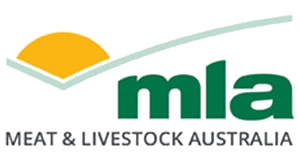Back to Research & Development
Flood information for livestock producers
The below directory has been compiled for producers affected by flood conditions. It includes a list of alert services, relevant contacts and support as well as resources for managing and recovering from flood.
Alert services
|
Australian national warnings summary
|
See current weather warnings in each state.
|
|
|
Australian rainfall and river conditions
|
Regional rainfall and river level updates
|
|
|
Emergency updates by location
|
Search for digital and radio emergency updates based on your location.
|
|
|
Floods and storms: current situation
Information for producers |
Current information on floods and storms in NSW, including current animal safe places.
|
Key contacts
|
For emergency support during or after a flood or storm
|
P: 132 500
Qld web app |
|
|
Customer service and support for people and businesses (including primary producers) recovering from flood
|
13 77 88
Translation services: 13 14 50 |
|
|
Australian Livestock and Rural Transporters Association
|
For assistance with emergency livestock movements
|
|
|
NSW Agricultural and Animal Services hotline
|
For emergency fodder, water and animal welfare assistance in NSW
|
1800 814 647
|
|
Queensland vet hotline
|
For emergency animal welfare assistance in Queensland
|
1800 621 918
|
|
Lifeline Australia
|
24-hour mental health support for people experiencing distress
|
13 11 14
|
|
For emergency animal welfare assistance in Victoria
|
1800 226 226
|
Dealing with flood
Farm and livestock management resources
For producers and advisors dealing with flooding, the following resources provide guidance for managing the wellbeing, handling and movement of livestock.
Flood recovery
Careful management can help minimise impacts on productivity when a flood event occurs. Knowing the signs of pasture damage, parasites and disease that occur during and after flood events can make recovery faster and more effective.
Parasites
Diseases
Pastures
Post-flood actions
To ensure animal health and welfare after a flood:
- Keep livestock away from areas that have been spoilt with floodwater from stockyards or other areas that had a high build-up of manure and urine.
- Monitor lactating cows and ewes as environmental mastitis is caused by mud and bacteria.
- Inspect hay and grain for water damage or toxic mould growth as pasteurellosis, salmonellosis and botulism are bacterial diseases caused by ingesting contaminated feed or water that may become more prevalent after a flood.
- Implement a weed control program and restrict livestock from areas where toxic plants may be present.
- If livestock show signs of ill-thrift or illness, seek immediate advice from veterinarians or DPI animal health officers.
- If it is necessary to humanely kill livestock to prevent suffering, follow this guide from Business Queensland: Humane killing of injured livestock
- Check fences and ensure they are stock-proof to enable biosecurity to be managed and protected.
Related resources
Financial and other assistance
ATO support
Australian Government support
NSW support
QLD support
NT support
SA support
TAS support
VIC support
WA support


